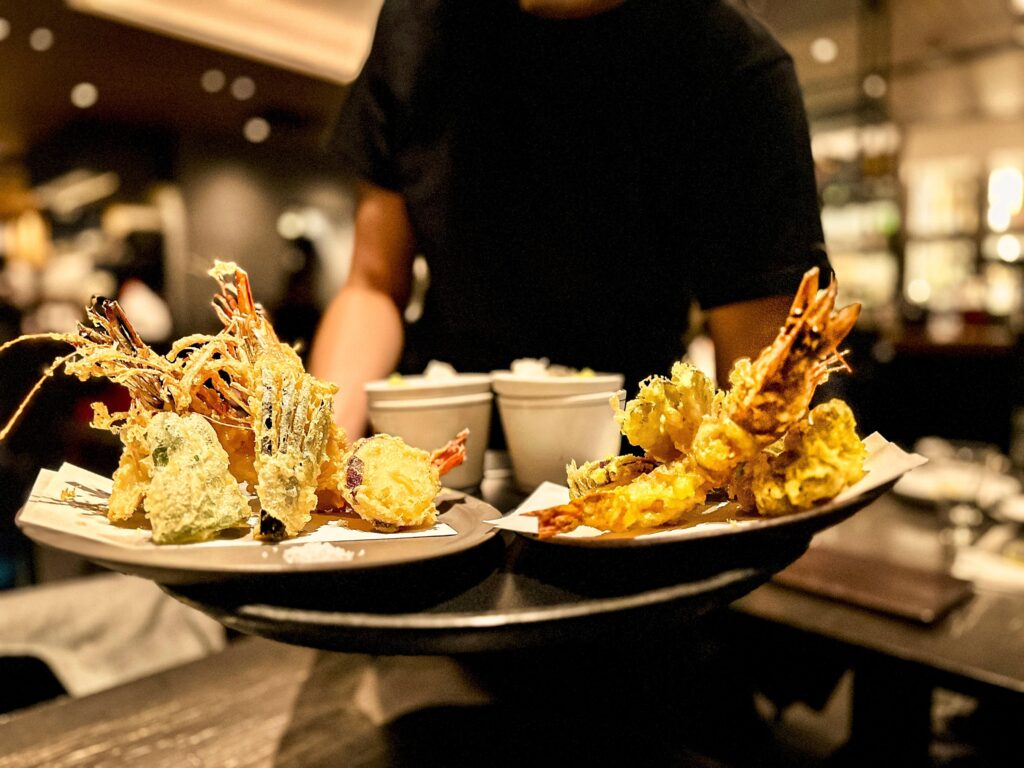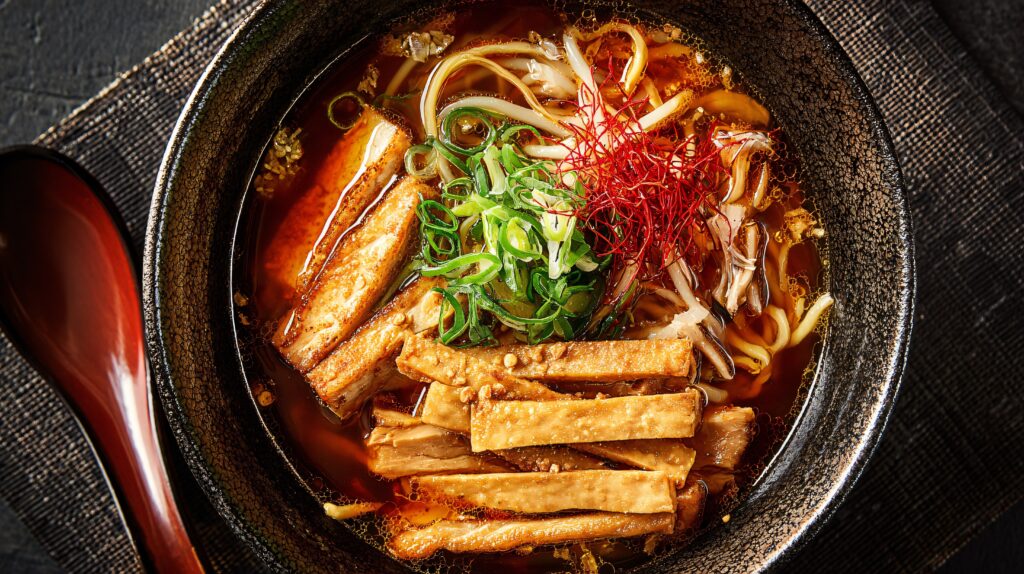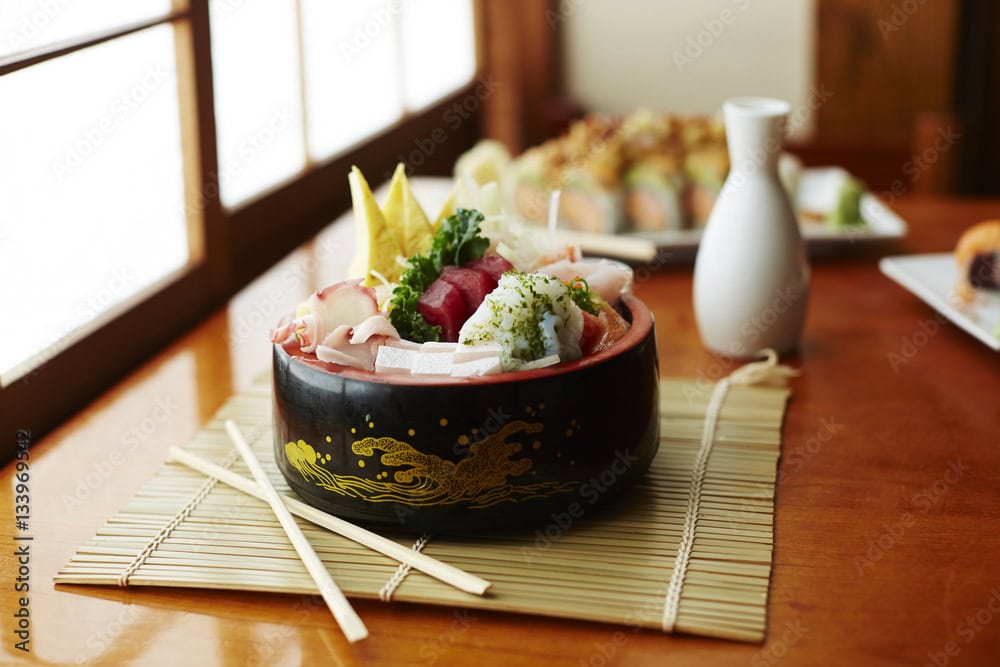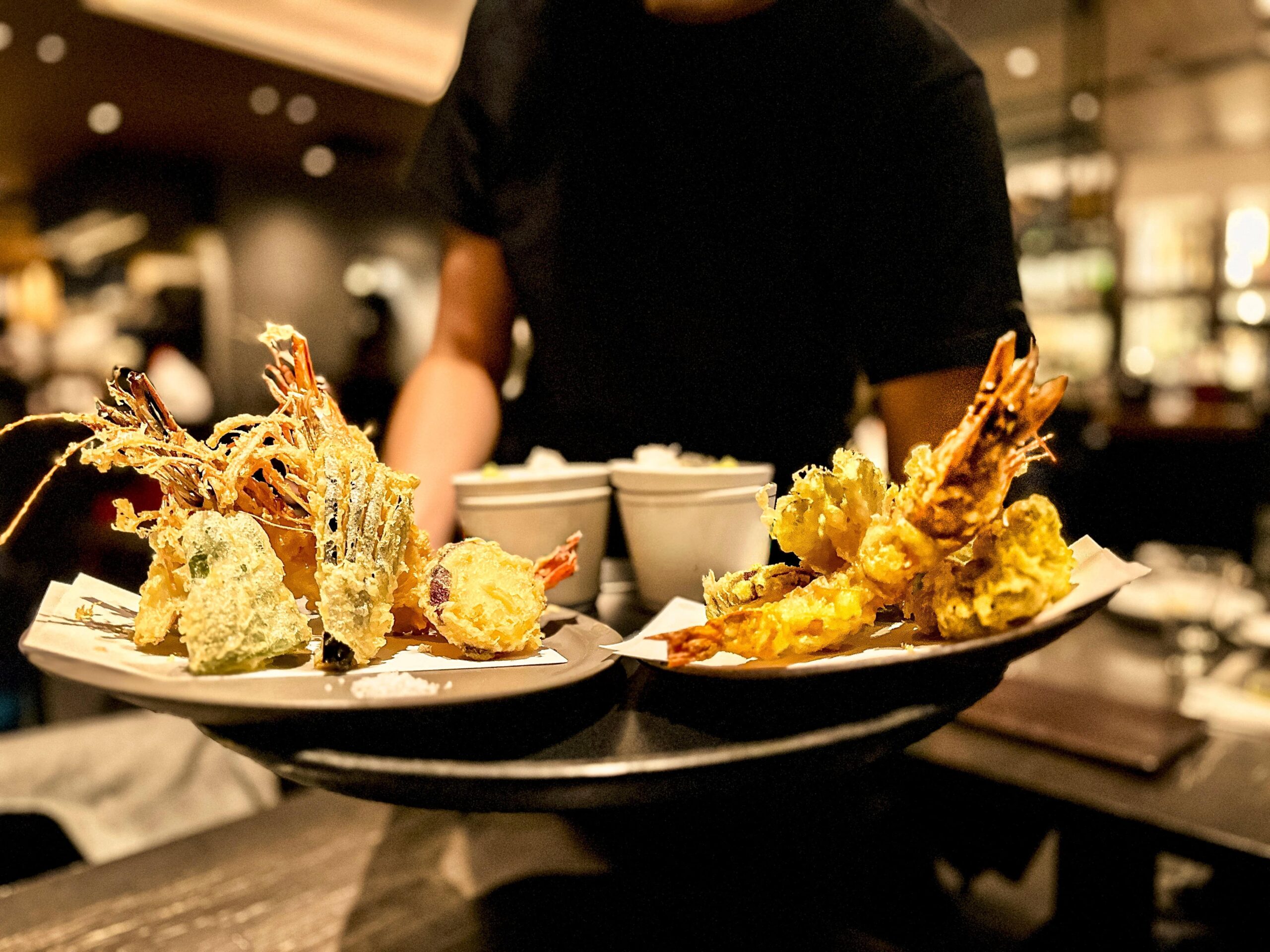
Japanese cuisine is steeped in the vast history and rich culture of Japan. Dedicating a part of your trip to food in Japan is a great way to experience the country. This is your Japan food guide with regional insights, dining etiquette tips, and must-eat recommendations for your trip — curated by a luxury travel planner.
The basics: food in Japan
Loved for its emphasis on fresh ingredients and a careful balance of flavors and textures, Japanese cuisine has a diverse culinary tradition formed over centuries of history. As an island, seafood is a core feature of food in Japan, so you’ll find a wide variety of fresh fish and coastal dishes alongside rice, noodles, and fresh produce. Let’s review some of the common ingredients and flavors you’ll see on a menu in Japan and how they’ll add to your culinary experience.
Japanese ingredients, flavors, and seasons in review
Outside of fish and rice, there are a handful of other ingredients that are essential to seasoning Japanese food. The Japanese flavor profiles are typically built on these three:
Soy sauce
This fermented sauce is made from a simple combination of soybeans, wheat, salt, and water. As the basis for much of Japanese cuisine, you’ll find this used in many dishes for the savory umami flavor it adds. There is a wide variety of soy sauce types, too, the most common being light (usukuchi) and dark (koikuchi) soy sauce.
Sake
As a popular alcoholic drink in Japan, you’ll find sake everywhere. But it is also a very common cooking ingredient. This rice wine is used to enhance flavors and tenderize meats, similar to the way wine is used in Western dishes.
Mirin
Similar to sake, but with a lower alcohol content and higher sugar content, mirin is used to balance salty and savory flavors. This rice wine adds a subtle sweetness in teriyaki sauces and other glazes.
Seasonality in Japanese food
The changing of seasons plays a big role in Japanese culture and cuisine. Japanese cuisine’s connection to the season is a practice known as “shun.” This means that seasonal menus are the norm here, offering vastly different flavors and ingredients across spring, summer, autumn, and winter.
Japanese table manners and dining etiquette to know
With such a rich culture of respect and tradition, there are a few faux pas to avoid when dining in Japan.
Chopsticks
You’ve likely encountered chopsticks at your favorite local Asian restaurant. Knowing how to use this utensil will be an important skill when dining in Japan. However, there are a few important guidelines to follow when using them.
Do
- Bring your chopsticks to your mouth (not the other way around)
- Use the provided chopstick rest when not using them (I.E., don’t rest the chopsticks in the food)
- Serve food from the communal platter to your personal plate before eating it
Don’t
- Stick the chopsticks vertically into your food
- Pass food from chopstick to chopstick
- Skewer or stab food with your chopsticks
Drinking
When enjoying a drink in a social setting, keep in mind these simple dos and don’ts.
Do
- Use both hands to pour from the bottle into the cup
- Salute those at your table before taking a drink with the Japanese toast “kanpai!”
- Allow your dining companions to pour your drink
Don’t
- Pour your own drink
- Get obviously drunk at formal dining restaurants
Other important table manners and dining etiquette to keep in mind
- Timeliness is crucial here, so arrive to your reservations at least 5-10 minutes early
- Finishing your meal down to the last grain of rice is a sign of respect and appreciation
- Avoid loud chewing; however, slurping your noodles is not only acceptable, it’s encouraged as a sign of respect and gratitude.
- Remove your shoes in traditional dining settings when seated on the ground
- Tipping is not common or expected
- Queuing or waiting for a table is uncommon at fine dining locations. It’s best to make reservations for popular locations. However, you’ll see queuing at casual eateries like ramen shops.
Places to eat in Japan: The top places to dine from region to region
Tokyo
Kagurazaka Ishikawa
The serene setting and simple ingredients of this restaurant have earned it three Michelin stars and a reputation as one of the best dining experiences in all of Japan. This chef’s approach perfectly embodies the Japanese appreciation for harmony and balance, showing a deep respect for nature and high-quality ingredients.
- Traditional Japanese
- Fine dining
- Reservations required
- ¥10,000+ per person (similar to about $70 USD as of June 2025)
Sushi-dokoro Shigeru
Fresh, seasonal seafood and an impressive omakase menu make this sushi restaurant a local favorite (and recognized in the Michelin Bib Gourmand guide). You’ll love the warm hospitality, curated sake selection, and intimate, yet casual atmosphere.
- Sushi
- Casual atmosphere
- Reservations required
- ¥7,000-8,000 per person (similar to about $50-60 USD as of June 2025)
Sasaki Seimenjo
Local is the best way to describe this casual ramen eatery. The chef sources ingredients from nearby grocers and butchers, and uses Japanese wheat as the main ingredient in his noodles. Set in a quiet neighborhood known for antique shops and indie boutiques, the cozy atmosphere has made it a go-to for locals and ramen lovers alike.
- Ramen
- Casual atmosphere
- No reservations
- ¥1,000-2,000 per person (similar to about $7-14 USD as of June 2025)
Kyoto
Tempura Endo Yasaka
In the historic atmosphere of a former ochaya teahouse just steps from one of Japan’s oldest Zen temples, this tempura restaurant has continued to innovate. Whether you choose traditional tatami counters or table seating, the Kyoto-style tempura is sure to impress — featuring seasonal produce and seafood all sourced locally.
- Kyoto-style tempura
- Fine dining
- Reservations required
- ¥10,000+ per person (similar to about $70 USD as of June 2025)
Fortune Garden
Come for the chic space, stay for the bistro-style eats. The architectural landmark was built in 1927 and has been recently renovated as an event venue and restaurant with indoor and alfresco dining. While the stylish space and serene bamboo gardens set the scene, the French cuisine and seasonal ingredients invite you to slow down and savor it.
- French bistro-style
- Smart casual
- Reservations required
- ¥4,000-8,000 per person (similar to about $30-60 USD as of June 2025)
Kushikura Honten
You’ll feel right at home in this traditional wooden townhouse. The charcoal-grilled yakitori is top-notch, featuring skewers of chicken, tofu, and local vegetables as part of both set menus and a la carte options. Watch the chefs at work while you dine, or reserve the private dining room for larger groups.
- Yakitori
- Casual
- Reservations recommended
- ¥1,500-3,000 (similar to about $10-20 USD as of June 2025)
More restaurants to note across Japan
- Koryu – This restaurant in Osaka earned two Michelin stars for its creative and fresh plates. Menus are set, reservations are required, and the dress code is smart casual.
- Kikusuiro – A historic, yet casual space in Nara that features traditional Japanese dishes and hospitality. Reservations are required.
- Wakkoqu – Teppanyaki-style dining (also known as hibachi) in Kobe is the quintessential experience for Kobe beef. Reservations are required.
- Itoh Dining by Nobu – The iconic Nobu name and experience set in a quiet escape in Hakone. We recommend the A5 Wagyu steak dinner. Reservations are required, and the dress code is smart casual.
- Rokkakudo Seseragi Dori – Found on the edge of the samurai district in Kanazawa, this restaurant serves some of the best grilled dishes in the area. Reservations are recommended.



Want a personalized Japan food guide?
Japan’s food culture is rich, so you’ll be glad that you dedicated some of your time to touring the country’s cuisine. And if some of these locations piqued your interest but you’re longing for more, get in touch. As a luxury travel planner, I love including personalized dining and activity recommendations for each of my clients.
